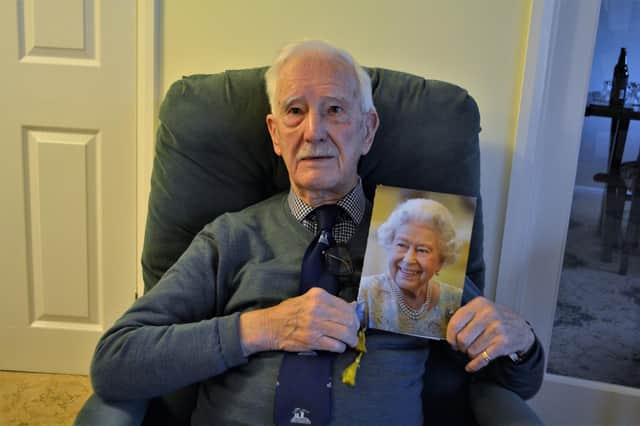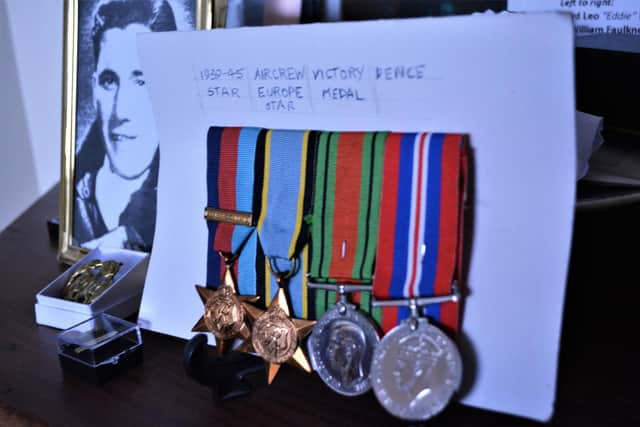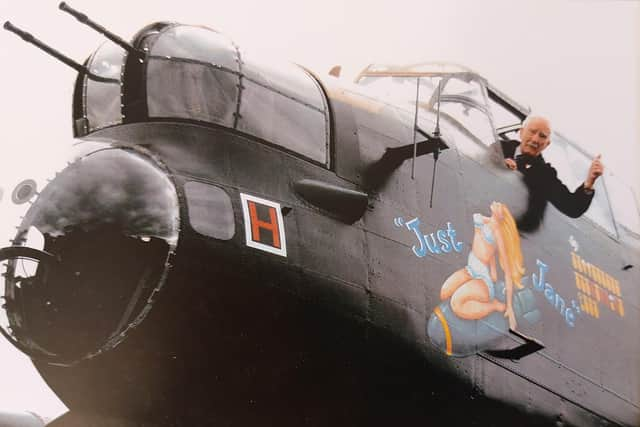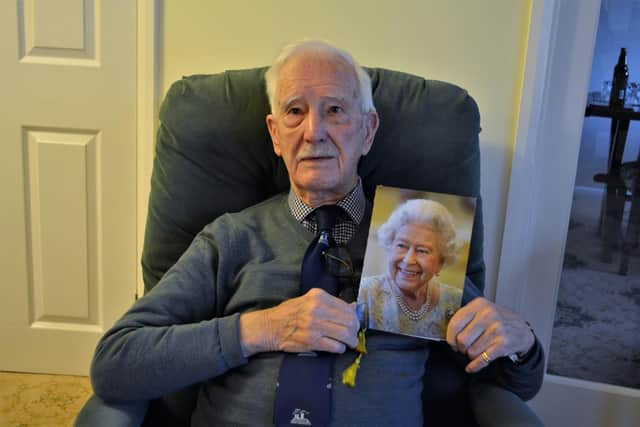Worksop RAF veteran shares his incredible story after his plane caught fire during World War Two - part one


Edward Humes received hundreds of messages from his family and many friends including from former pupils he taught from St Mary’s School in Park Street on his birthday on New Year’s Day.
The much-loved former headteacher took the occasion to share his fantastic story with the Worksop Guardian.
Advertisement
Advertisement
Edward, or Eddie as he prefers to be known, left school aged 14 and although he wanted to progress further with his education and he also wanted to learn how to fly.


Like most families, Eddie’s parents couldn’t afford to provide him with flying lessons, so the only way he could fulfill his ambition was to join the RAF, which he did in early 1939, by joining becoming a flight mechanic after his recruiters informed him that he wouldn’t be clever enough to fly.
At the end of his recruit training, as war was imminent, Eddie was posted as a barrage balloon operator, which he objected to and was swiftly informed he was in the RAF so “do as you are told.”
During his posting he played for the squadron football team, and on one occasion told to officers about how his ambition to fly.
Advertisement
Advertisement
They encouraged him to keep trying and eventually Eddie was accepted as training for air crew.


In the meantime he had to stay with the balloon squadron and was placed in various locations in the East End of London during the Blitz.
It was while he was there that he got his final posting to air crew training.
Eddie, who lives in Worksop, said: "I had to go to Lords cricket ground for a medical examination and intelligence test, I had to wait for a couple of weeks and was informed that I’d passed, and then went on to begin my aircrew training.
Advertisement
Advertisement
"Everybody at that time began their ground training as a pilot.


"My group went to St Andrews University in Scotland and did our ground training there, meteorology and all sorts of things. At the end of that course we still hadn’t seen an aeroplane and we went across the river to a place called Scone.”
Training continued flying Tiger Moths and soon Eddie became classified as a navigator.
“You were supposed to be there for a couple of weeks but my little group was there for 12 weeks and you got a bit tired,” he said.
"We were spending money and the weather was getting bad.
Advertisement
Advertisement
"I was a senior airman and was sent to the Anderton group. We weren’t there officially, we hadn’t been assigned anywhere so we had a couple of weeks leave then posted to Bridgnorth in Shropshire, and started the next part of the course.
"We did more tests and then went to Dumfries and began to put all we had learned into practice in the air.”
From Dumfries Eddie moved on to Chipping Norton, which was an operational training unit where he joined his air new crew of four Australians and one Englishman.
They flew Wellington Bombers uniting as a crew, before transferring to Little Snoring in Norfolk.
Advertisement
Advertisement
It was there that they picked up a further two members of the crew as the Lancaster Bombers required seven crew members, an engineer to help the pilot at the controls and a mid upper gunner.
The crew went on to form a new squadron called the 514 and were posted to Waterbeach.
On April 11 1944 they took off for Aachen, it was their 17th mission.
On the return journey, suddenly the port outer engine caught fire.
Advertisement
Advertisement
At first engineer thought he could put the fire out, but things didn’t go to plan.
Eddie said: “The end of the wing fell off and then an engine followed it, so we only had one and a half wings and three engines.
"The plane was spinning out of control. We were ordered to abandon aircraft.
"At first, the engineer said he wasn’t going to because he thought he could put the fire out.
Advertisement
Advertisement
“It was the job of the bomb aimer to open the front of the escape hatch, and then he left the aircraft.
"By now the aircraft was spinning, I then looked up and saw that he has left his parachute, it was still in the holder.
"I was trapped at the escape hatch, and the only way I could get out was to deploy my parachute which pulled me out of the aircraft.
“The force of coming out of the plane saw me break my femur rather badly.
Advertisement
Advertisement
"I landed on the ground and eventually I couldn't see, I was quite blind.
"I heard some voices so I called out for help, and they told me to be quiet, they weren’t Germans, they were Belgians, so I did as I was told.
"They took me to a nearby house, and rather than question me then, they put me on a sofa and let me sleep.
"In the morning they had brought the doctor who could speak perfect English, there was nothing he could do.
Advertisement
Advertisement
"I had to go to hospital so they called the authorities and arranged to take me to a hospital which was run by the German Navy.”
Eddie was treated exceptionally well.
They performed the operation using a technique which they called Kuntscher’s Nail which was a German invention of repairing femur fractures.
He was supposed to be on traction for 12 weeks, but on the sixth week, the hospital was bombed and there was very little of it left except for the four walls surrounding Eddie.
See next week’s Worksop Guardian for part two of Eddie incredible story.